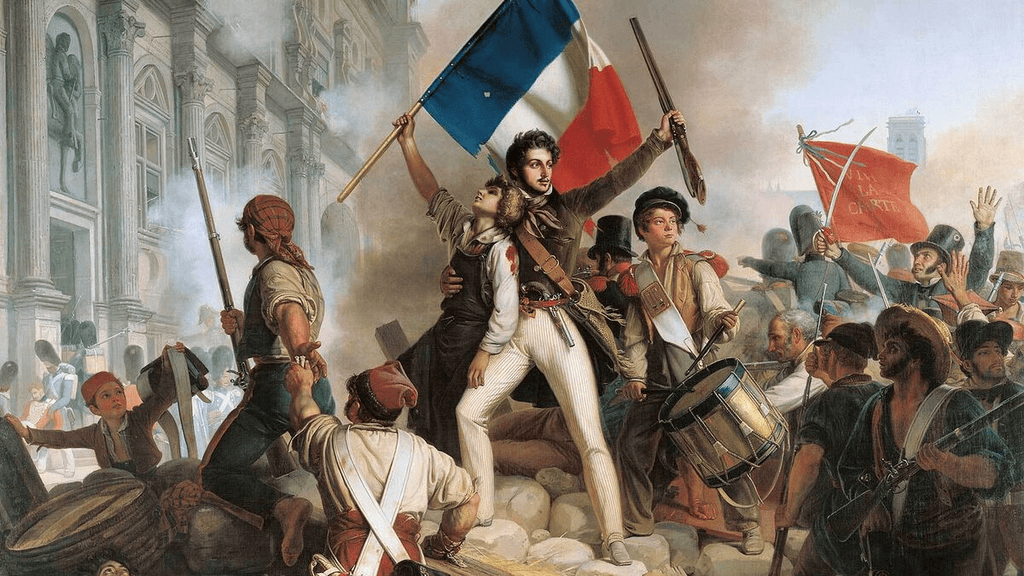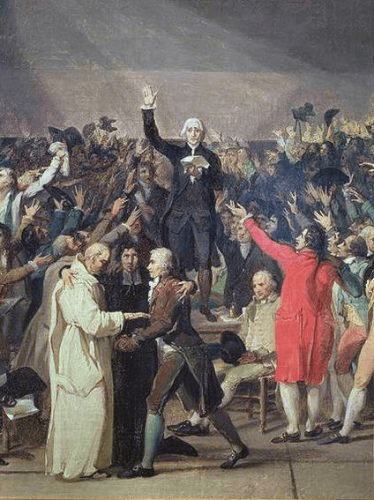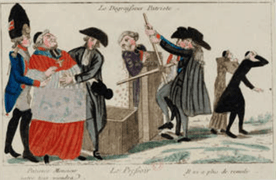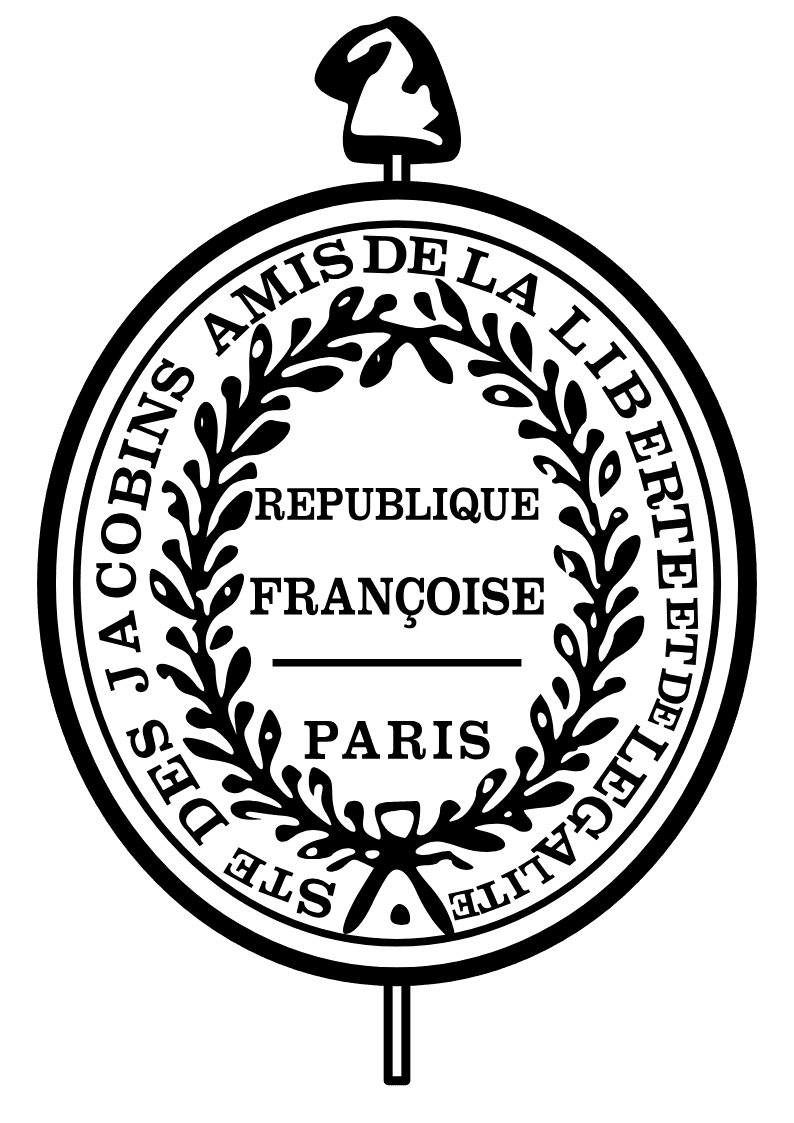Class 9 History Chapter 1 Question Answers - The French Revolution
Q1. Describe the circumstances leading to the outbreak of revolutionary protest in France.
Ans: The outbreak of revolutionary protest in France resulted from a mix of social, political, economic, and intellectual factors:
- Social Causes: French society was divided into three estates. The First Estate (clergy) and Second Estate (nobility) enjoyed privileges and did not pay taxes. In contrast, the Third Estate, which included peasants, workers, and the middle class (bourgeoisie), faced heavy taxation and lacked political rights, leading to widespread resentment.
- Political Causes: King Louis XVI was an ineffective ruler. He and his wife, Marie Antoinette, lived in luxury while ignoring the people's needs. The corrupt and inefficient government fueled demands for change in leadership.
- Economic Causes: France's economy suffered due to prolonged wars (like the American War of Independence), extravagant royal spending, and a flawed tax system that burdened the Third Estate. The government faced bankruptcy, and rising food prices caused widespread suffering.
- Intellectual Causes: Enlightenment thinkers such as Rousseau, Voltaire, and Montesquieu promoted ideas about liberty, equality, and democracy. These concepts inspired the populace to question the existing social and political systems.
 French Revolution
French Revolution
Q2. Describe the legacy of the French Revolution for the people of the world during the 19th and 20th centuries.
Ans: The French Revolution had a profound and lasting impact on the world, particularly during the 19th and 20th centuries. Its revolutionary ideas sparked numerous movements and changes globally.
- Liberty: The Revolution highlighted the importance of liberty, as seen in the Declaration of the Rights of Man and Citizen. This laid the groundwork for a new social order, encouraging individual freedom and national sovereignty. It inspired people worldwide to fight for their rights.
- Equality: The principle of equality challenged societies built on privilege. The notion that "all individuals have the same rights" became a rallying cry for political movements, motivating people to demand equal treatment under the law.
- Fraternity: This concept promoted unity and cooperation among different societal groups. It encouraged individuals to work together for the common good, regardless of their backgrounds.
- Nationalism: A significant legacy was the rise of nationalism. The Revolution inspired nations like Poland, Germany, and Italy to pursue independence and form nation-states, reshaping Europe’s political landscape and influencing movements in South America.
- Other Ideas: The Revolution also introduced concepts such as the abolition of serfdom and the push for equal rights for women. These ideas spread globally and influenced future social movements.
Q3. What is the significance of 'The Tennis Court Oath' in the French Revolution?
Ans: The Tennis Court Oath was a crucial moment in the French Revolution, symbolising the growing power of the Third Estate. On 20 June 1789, representatives of the Third Estate, who believed they represented the French people, convened in an indoor tennis court at Versailles. They proclaimed themselves the National Assembly and pledged not to disband until they had created a constitution to limit the king's powers. Key points include:
- Leaders like Mirabeau and Abbé Sieyès were instrumental in this movement.
- While drafting the constitution, unrest spread across France.
- The storming of the Bastille and peasant revolts reflected the demand for change.
 Tennis Court Oath
Tennis Court Oath
Q4. Explain why the artist has portrayed the nobleman as the spider and the peasant as the fly.
Ans: The artist used the imagery of a spider and a fly to represent the relationship between nobles and peasants in 18th-century France:
- The spider symbolises the nobleman, who traps and exploits the hardworking fly, representing the peasant.
- Nobles profited from the labour of peasants, who were burdened with feudal dues and various obligations.
- This portrayal highlights the exploitative social structure of the time, where the rich benefited at the expense of the poor.
Q5. Which groups of French society would have gained from the Constitution of 1791? Which groups would have had reason to be dissatisfied? What developments does Marat (Source B) anticipate in the future?
Ans: The Constitution of 1791 primarily benefited the wealthier members of the Third Estate, granting them political power and rights previously reserved for the nobility and clergy. Conversely, the following groups were dissatisfied:
- First Estate (clergy): Lost their privileges and had to pay taxes.
- Second Estate (nobility): Also lost their privileges and faced taxation.
Marat anticipated further unrest, predicting that the poor would rise against the wealthy bourgeoisie, similar to how they had previously overthrown the nobles and clergy. He expected a new wave of rebellion led by the underprivileged against the rich.
Q6. Imagine the impact of the events in France on neighboring countries such as Prussia, Austria-Hungary or Spain, all of which were absolute monarchies. How would the kings, traders, peasants, nobles or members of the clergy here have reacted to the news of what was happening in France?
Ans: The kings, nobles, and clergy in neighbouring countries such as Prussia, Austria-Hungary, and Spain would have reacted with alarm to the events in France. They feared that the revolutionary ideas of:
- Liberty
- Equality
- Fraternity
might inspire similar uprisings in their own realms, threatening their absolute power. In contrast, the peasants and the less privileged in these countries would likely have welcomed the news. They would see the French Revolution as a beacon of hope for:
- Change in their lives
- Relief from oppressive systems
The revolutionary events also created new opportunities for women, allowing them to:
- Train as artists
- Exhibit their work
A notable example from this period is a female allegory of liberty, symbolising freedom through the image of a woman.
Q7. Describe the picture in your own words. What are the images that the artist has used to communicate the following ideas: greed, equality, justice, and takeover by the state of the assets of the Church?
Ans: Greed is represented by the fat clergyman on the left. The two men beside him depict government officials who have seized the Church's assets. In the centre, the fat-reducing press symbolizes justice. The figures on the right, a man and a woman, represent equality. Overall, the image illustrates the ideals of the revolution.
 Patriotic fat-reducing
Patriotic fat-reducing
Q8. How did the French people ultimately get the right to vote for all citizens?
Ans: In the summer of 1792, the Jacobin leaders organised a revolt with many angry Parisians, frustrated by food shortages and high prices. Key events included:
- On August 10, they stormed the Tuileries Palace.
- The king's guards were killed, and King Louis XVI was taken hostage.
- The Assembly voted to imprison the royal family.
Following these events:
- Elections were held.
- All men aged 21 and above, regardless of wealth, were granted the right to vote.
The newly elected assembly was called the Convention, which abolished the monarchy on 21 September 1792 and declared France a republic. This meant that the people could elect their government, including the head of state, rather than having a hereditary monarchy.
Q9. How did peasants protest against the feudal lords or nobles of France?
Ans: Peasants protested against the feudal lords in France through various actions driven by fear and anger:
- Rumours circulated that landlords had hired brigands to destroy ripe crops.
- In response, peasants armed themselves with hoes and pitchforks.
- They attacked châteaux (noble castles), looting grain and burning documents that listed their dues.
- Many nobles fled their estates, seeking safety in neighbouring countries.
This unrest contributed to significant changes in the feudal system, as the National Assembly later abolished feudal obligations and privileges.
Q10. Differentiate between Active and Passive Citizens.
Ans: Active Citizens:
- Men over 25 years old.
- Paid taxes equal to at least three days' wages of a labourer.
- Had the right to vote.
Passive Citizens:
- Included all other men and women.
- Did not have the right to vote.
Q11. What rights were provided by the French Constitution?
Ans: The Constitution began with the Declaration of the Rights of Man and Citizen, which established several fundamental rights:
- Natural and inalienable rights: Rights that belong to every human being by birth and cannot be taken away.
- Right to life: Every individual has the right to live.
- Freedom of speech: Citizens can express their opinions freely.
- Equality before the law: All individuals are treated equally under the law.
The state has a duty to protect these rights for every citizen. Key principles from the Declaration include:
- All men are born free and equal in rights.
- The purpose of political associations is to preserve natural rights, including liberty and property.
- Sovereignty resides in the nation; authority comes from the people.
- Liberty allows individuals to act as long as it does not harm others.
- Law is the expression of the general will, and all citizens have the right to participate in its formation.
- No one can be arrested without legal justification.
- Citizens can speak, write, and print freely, but must take responsibility for any misuse.
- Property is a sacred right; it cannot be taken without just compensation.
Q12. What do you know about the political clubs formed in France?
Ans: During the French Revolution, many believed that the revolution needed to go further, as the Constitution of 1791 mainly benefited the wealthy. This led to the rise of political clubs, which served as vital spaces for discussing government policies and planning actions.
- The most influential club was the Jacobin Club, named after a former convent in Paris.
- Members of the Jacobin Club were mainly from less prosperous backgrounds, including small shopkeepers and artisans.
- Women also formed their own clubs, with around sixty established across France, advocating for their right to vote.
- The Society of Revolutionary and Republican Women was the most notable among them.
These clubs played a crucial role in voicing the demands for equal political rights, as many women felt sidelined by the Constitution.
 Jacobian Club
Jacobian Club
Q13. What was a 'Directory'? Why was it removed from France?
Ans: After the fall of the Jacobin government, a new constitution was established in France. This constitution:
- Denied voting rights to non-propertied men.
- Created two elected legislative councils.
- Appointed a Directory, which was an executive body of five members.
However, the Directory faced several challenges:
- Frequent clashes with the legislative councils.
- Political instability due to these conflicts.
This instability ultimately facilitated the rise of Napoleon Bonaparte and his military dictatorship.
Q14. How did women suffer in France?
Ans: In France, many women faced significant hardships:
- Most women had to work to support themselves, often as laundresses, seamstresses, or selling flowers, fruits, and vegetables.
- They were frequently employed as domestic servants in wealthier households.
- Access to education or job training was limited, with only noble daughters receiving formal schooling.
- Women were responsible for household duties, including cooking, fetching water, queuing for bread, and caring for children.
- They earned much lower wages than men for similar work.
To voice their concerns, women formed political clubs and newspapers, leading to the establishment of around sixty women's clubs across various cities. However, during the Reign of Terror, the government banned these clubs and many women faced arrest and execution. Despite these challenges, the fight for equal political rights persisted, culminating in women gaining the right to vote in 1946.
Q15. Which laws were made to improve the status of women in French society?
Ans: During the French Revolution, several laws were enacted to enhance the status of women:
- Compulsory education: Schooling became mandatory for all girls.
- Marriage rights: Fathers could no longer force daughters into marriage against their will.
- Divorce: Divorce was legalised, allowing both men and women to file for it.
- Employment opportunities: Women gained access to job training, could work as artists, or run small businesses.
Q16. What was the immediate cause of the French Revolution?
Ans: A harsh winter led to poor harvests, causing a significant rise in the price of bread, which was the staple food for most people. Bakers often hoarded bread, worsening the situation. Frustrated by long waits for bread, crowds of angry women stormed into bakeries. Meanwhile, King Louis XVI ordered troops into Paris. On 14 July 1789, a large crowd stormed the Bastille prison, marking the beginning of the French Revolution.
Q17. What was Guillotine? How was it used?
Ans: The guillotine was a device designed for execution, featuring two vertical poles and a sharp blade used for beheading. It was named after its inventor, Dr. Guillotine. During the French Revolution, it became a symbol of harsh punishment under Robespierre's regime. Key points about its use include:
- Opponents of Robespierre's policies were arrested and tried.
- If found guilty, they faced execution by guillotine.
- This method was seen as a means of enforcing control and eliminating dissent.
 Guillotine used during French Revolution
Guillotine used during French Revolution
Q18. How did the fall of Bastille prison become the immediate cause of the French Revolution?
Ans: On the morning of 14 July 1789, Paris was in turmoil. Rumours spread that the king would order his troops to fire on citizens. In response:
- About 7,000 men and women gathered at the town hall.
- They formed a people's militia and searched for arms.
- A group marched to the Bastille, a prison symbolising the king's power.
- They stormed the Bastille, resulting in the death of its commander and the release of prisoners.
This event became a powerful symbol of the people's uprising against the king's tyranny and marked the beginning of the French Revolution.
Q19. How can you say that Louis XVI was a despotic ruler?
Ans: Louis XVI, king of France from 1774, is often considered a despotic ruler due to his poor governance and financial mismanagement. Key points include:
- Inherited an empty treasury after years of costly wars.
- Supported the American War of Independence, worsening France's debt.
- Chose not to tax the wealthy nobility and clergy, instead burdening the common people with taxes.
- His extravagant lifestyle and unfair policies led to widespread dissatisfaction among the populace.
Q20. What does subsistence crisis mean? What led to the subsistence crisis in France?
Ans: A subsistence crisis occurs when people cannot afford basic necessities, such as food. In France, the population grew from 23 million in 1715 to 28 million in 1789, leading to a surge in demand for food.
- Food production could not keep up with this demand.
- The price of bread, a staple food, rose sharply.
- Workers' wages did not increase at the same rate as prices, widening the gap between the rich and poor.
- Bad weather, such as droughts or hailstorms, often resulted in poor harvests.
These factors contributed to frequent subsistence crises during the Old Regime.
Q21. Who represented the National Assembly on 5th May 1789?
Ans: On 5 May 1789, King Louis XVI convened the Estates General at Versailles to discuss new taxes. The assembly included:
- The First Estate (clergy) and Second Estate (nobility) each sent 300 representatives.
- The Third Estate, representing common people, sent 600 representatives, but they were positioned at the back.
- Members of the Third Estate were mainly educated and wealthy, while peasants, artisans, and women were excluded.
Despite their exclusion, the Third Estate brought 40,000 letters detailing grievances. They demanded that voting be conducted by individual members rather than by estate, a proposal rejected by the king. In protest, they left the assembly. On 20 June, they declared themselves a National Assembly, vowing to draft a constitution that would limit the monarch's powers.
Q22. What was Marseillaise? What led to the formation of Marseillaise?
Ans: The Marseillaise is a patriotic song composed by the poet Roget de L'Isle. It emerged during a time of significant turmoil in France:
- Despite King Louis XVI signing the constitution, he secretly negotiated with the King of Prussia to halt the revolution.
- Nearby rulers were also planning to send troops to suppress the revolutionary activities.
- To protect the revolution, the National Assembly declared war on Austria and Prussia in April 1792.
- Thousands of volunteers from the provinces joined the army, viewing it as a fight for the people against monarchies across Europe.
- As they marched into Paris, they sang the Marseillaise, which was first performed by volunteers from Marseille.
Today, the Marseillaise is recognised as the national anthem of France.
Q23. Why do you think that a growing middle class in France envisages an end to the privileges?
Ans: In the past, peasants and workers revolted against high taxes and food shortages. However, they lacked the means to create lasting change. The emergence of a new middle class in the 18th century changed this dynamic. This group included:
- Merchants
- Manufacturers
- Lawyers
- Administrators
They gained wealth through trade and the production of goods, such as textiles. Educated and influential, they believed:
- No one should be privileged by birth.
- Social status should be based on merit.
- Everyone deserves equal laws and opportunities.
Philosophers like John Locke and Jean Jacques Rousseau supported these ideas, advocating for a society built on freedom and equality.
Q24. What do you know about the triangular slave trade? What legislative measures were taken to end slavery in the French colonies?
Ans: The triangular slave trade involved three regions: Europe, Africa, and the Americas. Key points include:
- Europeans transported slaves from Africa to work on plantations in the Americas.
- These plantations produced goods like sugar, coffee, and indigo for European markets.
Regarding legislative measures in France:
- Initially, there was little opposition to slavery.
- The National Assembly debated extending human rights to colonial subjects but feared backlash from businessmen benefiting from the trade.
- In 1794, the Convention passed a law to abolish slavery in French colonies.
- This law was reversed by Napoleon in 1804.
- Finally, slavery was fully abolished in 1848.
Q25. What kinds of freedoms were granted to the citizens of France after the French Revolution?
Ans: Freedoms granted to citizens of France after the French Revolution included:
- Abolition of censorship: The fall of the Bastille led to the end of censorship. Previously, all publications required royal approval.
- Freedom of speech: The Declaration of the Rights of Man and Citizen established this as a natural right.
- Flourishing press: Newspapers, pamphlets, and books spread revolutionary ideas across France, encouraging public debate.
- Natural rights: Rights such as life, freedom of speech, and equality before the law were recognised as inalienable.
|
55 videos|525 docs|78 tests
|
FAQs on Class 9 History Chapter 1 Question Answers - The French Revolution
| 1. What were the main causes of the French Revolution? |  |
| 2. What role did the Enlightenment play in the French Revolution? |  |
| 3. How did the French Revolution impact the rest of the world? |  |
| 4. What were the major phases of the French Revolution? |  |
| 5. What were the outcomes of the French Revolution? |  |

















